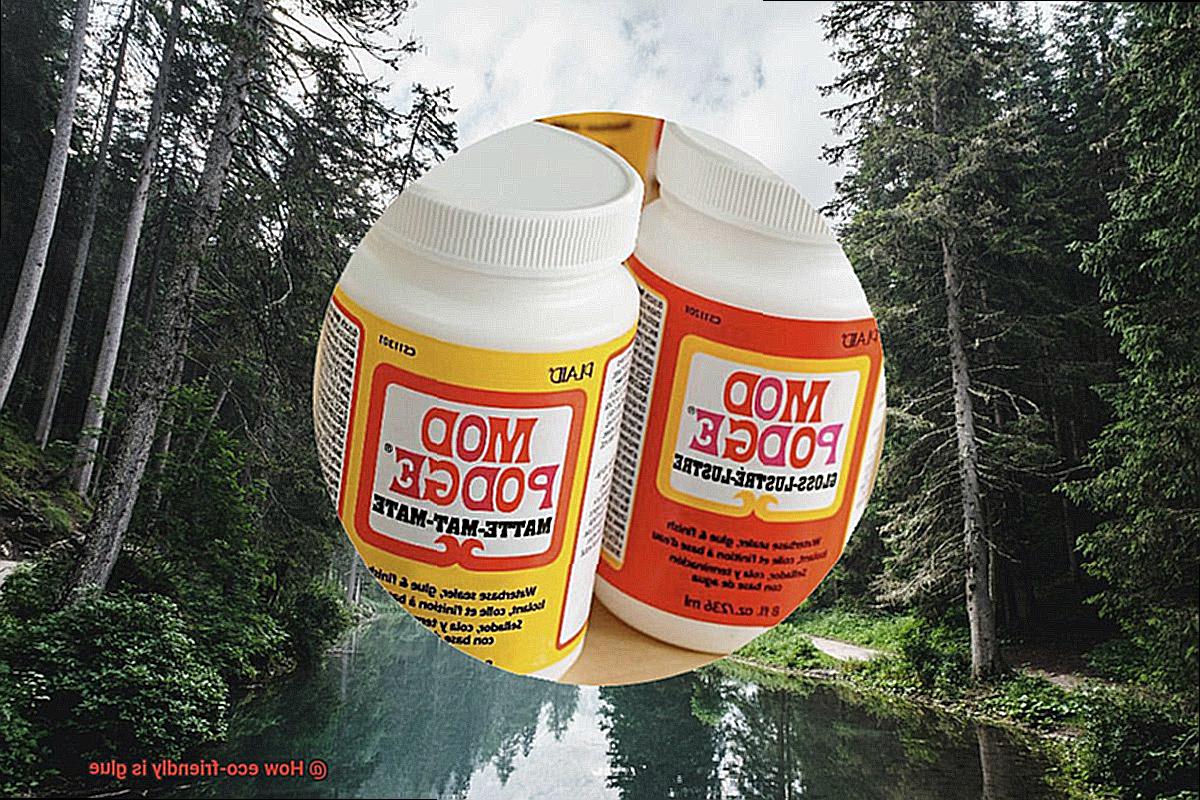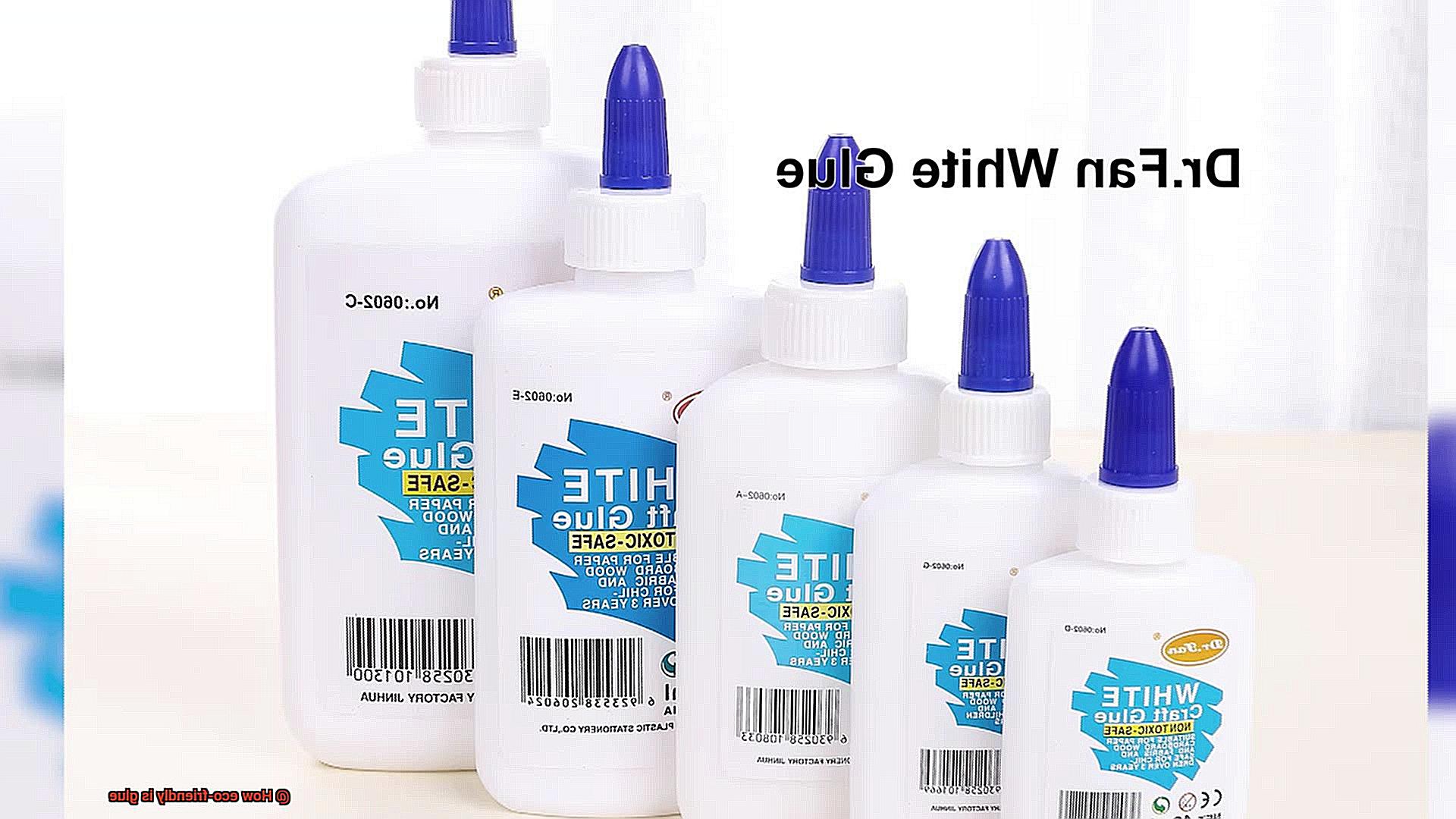Today, we’re going to tackle a topic that might just stick in your mind (pun intended): glue and its impact on our environment. Glue is one of those everyday things we come across regularly – whether it’s for arts and crafts, DIY projects, or fixing broken items.
But have you ever paused to ponder just how eco-friendly glue really is? In this blog post, we’ll take a deep dive into the world of glue, exploring its different types and their environmental implications.
From all-natural adhesives that Mother Nature would approve of to synthetic varieties that might raise an eyebrow or two, we’ll uncover which options are kinder to our planet. So the next time you find yourself in a sticky situation, you’ll be armed with knowledge to make more informed decisions.
Let’s get started.
Traditional Glues and Their Environmental Impacts
Contents
- 1 Traditional Glues and Their Environmental Impacts
- 2 Advances in Eco-Friendly Glue Development
- 3 Disposal Considerations for Different Types of Glue
- 4 The Role of Context in Assessing Eco-Friendliness
- 5 Plant-Based Alternatives to Petroleum-Based Glues
- 6 Soybean Adhesives as a Sustainable Option
- 7 Recycled Material Glues as an Eco-Friendly Choice
- 8 Conclusion
Glue is a ubiquitous adhesive substance that we often take for granted, unaware of the environmental consequences it may have. However, traditional glues can leave a lasting negative impact on our planet. In this blog post, we will delve into the various environmental concerns associated with conventional glues and emphasize the importance of embracing eco-friendly alternatives.
Chemical Composition:
Traditional glues frequently contain formaldehyde, a notorious carcinogen that becomes air pollution when released into the atmosphere. These chemicals not only pose threats to human health but also disrupt delicate ecosystems.
Production Process:
Many traditional glues derive from petroleum-based products, which are non-renewable resources. The extraction and processing of petroleum can result in habitat destruction, water pollution, and the release of greenhouse gases. Furthermore, manufacturing these glues demands copious amounts of energy and water, further exacerbating their environmental impact.
Disposal Challenges:
Disposing of traditional glues presents a formidable challenge for environmental sustainability. When these glues are discarded or end up in landfills, they leach harmful chemicals into the soil and water systems. This contamination can jeopardize wildlife and disrupt entire ecosystems.
Plastic Packaging:
Another pressing concern is the single-use plastic packaging used for traditional glues. The production and disposal of these plastics contribute to resource depletion and littering, exacerbating the already dire plastic waste crisis.
Eco-Friendly Alternatives:
Thankfully, eco-friendly glue options have emerged as viable alternatives. These alternatives harness natural and renewable sources such as plant starches, soybeans, or even recycled materials. They offer comparable adhesive strength while reducing reliance on fossil fuels and minimizing harmful emissions.
Advances in Eco-Friendly Glue Development
Glue is a versatile product used in various industries and everyday life. However, traditional glue formulations have a significant environmental impact and pose health risks due to their chemical composition. Fortunately, advances in eco-friendly glue development have brought about remarkable improvements, offering numerous benefits for those interested in learning about glue.
One of the most significant advancements in eco-friendly glue development is the use of natural and renewable materials. These glues are formulated using plant-based polymers, vegetable oils, and natural resins. Not only do these materials reduce our reliance on fossil fuels, but they also have a lower environmental impact throughout their life cycle. By using renewable resources, eco-friendly glues help to conserve non-renewable resources and reduce carbon emissions.
In addition to utilizing natural and renewable materials, eco-friendly glue formulations aim to minimize or eliminate hazardous substances found in traditional glues. Toxic chemicals can be harmful to both humans and the environment. Eco-friendly glues achieve this by carefully selecting raw materials and incorporating non-toxic additives. This promotes safety in both manufacturing and application processes without compromising adhesive properties.
Advancements in technology have also led to the development of water-based eco-friendly glues. Water-based adhesives have lower volatile organic compound (VOC) emissions compared to solvent-based counterparts. They require less energy for production and are easier to clean up. These glues provide excellent bonding performance across various applications while minimizing environmental impact.
Another significant improvement in eco-friendly glue development lies in enhanced biodegradability. Traditional glues persist in the environment for extended periods, contributing to pollution and waste accumulation. In contrast, eco-friendly glues are designed to break down naturally over time. They utilize biodegradable materials that can be easily broken down by microorganisms, facilitating recycling or composting of glued objects. This ensures minimal environmental impact and reduces waste in landfills.
To further promote sustainable practices, various organizations have established standards and certifications for eco-friendly products.
The Forest Stewardship Council (FSC) and the United States Green Building Council (USGBC) certify eco-friendly glues that adhere to their sustainability guidelines.
These certifications ensure that eco-friendly glues meet specific criteria related to raw material sourcing, manufacturing processes, and overall environmental impact.
Disposal Considerations for Different Types of Glue
Today, we’ll delve into the world of disposal considerations for different types of glue. By understanding the proper disposal methods, we can become environmentally responsible glue users and make a positive impact on our planet. Let’s dive in and explore the fascinating world of glue disposal.
Water-Based Glues: Easy Cleanup.
Water-based glues are like magic. They possess the power of being super eco-friendly and effortless to clean up. Since these glues are water-soluble, all you need to do is rinse them down the drain or toss them in the regular trash after they have completely dried. However, it’s crucial to ensure they are completely dry, preventing any potential leaks or harm.
Solvent-Based Glues: Handle with Care.
Solvent-based glues, such as super glue or epoxy, require special attention when it comes to disposal. These glues contain chemicals that can harm our environment, making it essential never to pour them down the drain. Instead, take them to designated hazardous waste collection sites or your local waste management facility. These experts will know precisely how to handle these potentially harmful substances safely.
Hot Melt Glues: Cool and Recycle.
Hot melt glues, often used for crafting and packaging purposes, present a unique challenge when it comes to disposal. Some hot melt glues can be recycled alongside other plastics, a fantastic eco-friendly option. However, others may need to be thrown away with regular trash. To determine the best course of action, check with your local recycling facilities to find out if they accept glue for recycling.

Animal-Based Glues: Nature’s Helper.
Traditional woodworking and musical instrument making have long relied on animal-based glues like hide glue or bone glue. The great news is that these glues are biodegradable. They possess the remarkable ability to break down naturally over time. You can safely dispose of them by composting or burying them in soil, ensuring they are kept away from water sources.
Synthetic Resin Glues: Hazardous Waste Alert.
Synthetic resin glues, such as PVA or UF glues commonly used in woodworking and construction, demand caution when it comes to disposal. Unlike their biodegradable counterparts, these glues are not friendly to the environment and should never be thrown into compost or buried in soil. Treat them as hazardous waste and dispose of them through the proper channels to prevent any potential harm.
The Role of Context in Assessing Eco-Friendliness
From its composition and manufacturing process to usage patterns and disposal methods, every aspect must be considered. So, let’s dive into the world of glue and explore its hidden eco-friendliness.
Composition and Manufacturing Process:
Traditional glue formulations often contain harmful chemicals that can harm both the environment and human health. However, with technological advancements, eco-friendly glues made from natural ingredients or recycled materials are now available.
By considering the context of glue production, such as energy efficiency and waste reduction, manufacturers can significantly reduce their carbon footprint. Sustainable practices like using renewable energy sources and recycling water used in production contribute to a more eco-friendly product.
Usage Patterns:

The way we use glue can also have a significant impact on its eco-friendliness. Over-application or wastage of glue leads to unnecessary resource consumption and increased waste generation.
In some cases, alternative adhesive methods like reusable adhesives or mechanical fasteners may be more environmentally friendly options. Understanding the specific context of glue usage allows for informed decision-making and promotes eco-conscious choices.
Disposal and Recycling:
Proper disposal and recycling methods are crucial for minimizing the environmental impact of glue. Certain types of glue, especially those containing hazardous substances, require special disposal as hazardous waste. Educating users about correct disposal methods for different types of glue is essential.
Additionally, some glues are designed to be biodegradable or compostable, reducing their impact on landfills. The availability of recycling facilities or composting systems in the context of glue disposal is vital for maximizing its eco-friendliness.
Plant-Based Alternatives to Petroleum-Based Glues

In a world where environmental concerns are at the forefront, the search for plant-based alternatives to petroleum-based glues has gained significant momentum. These eco-friendly alternatives, crafted from natural materials such as starch, vegetable oils, and plant proteins, offer a greener way to bond and adhere materials.
One of the most notable advantages of plant-based glues is their non-toxic nature. Unlike their petroleum-based counterparts, these adhesives do not release harmful volatile organic compounds (VOCs).
This means you can utilize them without any worry of inhaling toxic fumes or compromising your health. Furthermore, the lower environmental impact of plant-based glues cannot be ignored. The production process requires less energy and emits fewer greenhouse gases, making it a more sustainable choice overall.
Biodegradability is another key benefit offered by plant-based glues. Once your project is complete, recycling or disposing of these glues poses no threat to the environment. They naturally break down over time, reducing waste and contributing to a circular economy.
However, it is crucial to note that not all plant-based glues are created equal. Some may still contain trace amounts of synthetic chemicals or additives. To ensure optimal sustainability, it is essential to choose products certified as environmentally friendly or look for specific eco-labels. By conducting thorough research and selecting the most sustainable option available, you can make a conscious choice that aligns with your values.
Fortunately, the availability of plant-based glues is on the rise. As more companies recognize the demand for sustainable adhesive options, they are offering plant-based alternatives suitable for various applications. Whether you are engaged in woodworking, packaging, or bookbinding, there is undoubtedly a plant-based glue out there tailored to your needs.
Soybean Adhesives as a Sustainable Option
In the quest for a greener way to stick things together, plant-based glues have emerged as the eco-friendly superheroes of the adhesive world. Among them, soybean adhesives have gained popularity due to their sustainability benefits and ability to replace traditional petroleum-based adhesives. In this article, we will delve into the reasons why soybean adhesives are a sustainable option, offering an in-depth analysis that explores their environmental advantages and application versatility.
Lower Carbon Footprint:
Soybean adhesives are made from soybean oil, a renewable resource that can be grown and harvested sustainably. In contrast, petroleum-based adhesives rely on finite resources that require extensive extraction and refining processes. By choosing soybean adhesives, we can significantly reduce our carbon footprint and contribute to a more sustainable future.
Reduced VOC Emissions:
Traditional adhesives often contain high levels of volatile organic compounds (VOCs), which contribute to air pollution and indoor air quality issues. On the other hand, soybean adhesives have significantly lower levels of VOCs, making them a healthier choice for both the environment and human health. By opting for soybean adhesives, we can breathe easier and reduce our impact on the planet.
Biodegradability:
When disposed of, soybean adhesives naturally break down over time, minimizing their impact on landfills and ecosystems. In contrast, petroleum-based adhesives can persist in the environment for extended periods, contributing to pollution. By choosing biodegradable soybean adhesives, we can actively participate in reducing waste and preserving our natural surroundings.
Versatile Applications:
Soybean adhesives offer excellent adhesive properties that make them suitable for a wide range of applications. From construction and woodworking to packaging and automotive industries, these adhesives exhibit good bonding strength and properties similar to traditional adhesives. With soybean adhesives, we can embrace sustainability without compromising on quality.
Cost-Effectiveness:
Soybeans are widely cultivated in many parts of the world, making the raw material for soybean adhesives readily available and relatively inexpensive. This cost-effectiveness makes soybean adhesives an affordable option for both manufacturers and consumers alike. By choosing sustainable and budget-friendly options, we can make a positive impact on our wallets and the planet.
Conclusion:
Soybean adhesives offer a sustainable and eco-friendly alternative to traditional petroleum-based adhesives. With their lower environmental impact, improved indoor air quality, biodegradability, versatile applications, and cost-effectiveness, soybean adhesives are a promising option for those seeking eco-friendly glue solutions.
Recycled Material Glues as an Eco-Friendly Choice
Are you tired of using glue that contributes to environmental degradation? Say goodbye to traditional glues and hello to recycled material glues. These eco-friendly alternatives are made from recycled materials, making them a sustainable choice for all your adhesive needs. Let’s dive into the benefits of using recycled material glues and discover how they contribute to a greener future.
Closing the Loop on Waste:
Recycled material glues play a crucial role in the circular economy by reusing materials that would otherwise end up in landfills. By choosing these glues, you’re helping to conserve natural resources and reduce the environmental impact associated with extracting and processing new materials. It’s a win-win for both you and the planet.
Lower Carbon Footprint:
Did you know that recycled material glues have a smaller carbon footprint compared to traditional glues? Their production requires less energy and emits fewer greenhouse gases. By opting for recycled material glues, you’re making a sustainable choice that helps combat climate change. So stick it to high carbon emissions and choose eco-friendly glue.
Easy Recycling Process:
Recycled material glues are not only made from recycled materials but can also be easily recycled themselves. When a product glued with these eco-friendly glues reaches its end of life, it can be disassembled, and the glue can be separated from the other materials.
This allows the glue to be processed and reused in creating new glues, minimizing waste and closing the recycling loop. It’s a simple step towards a more circular economy.
Versatile and Reliable:
There’s no need to compromise on quality or functionality when choosing recycled material glues. They offer similar performance to traditional glues, providing strong adhesion on various surfaces like paper, cardboard, wood, and even some plastics.
So, whether you’re crafting, repairing, or creating art, these glues have got you covered. Stick it all together with confidence.
Limitations and Future Developments:
While recycled material glues have numerous advantages, there are still some limitations to consider. Certain adhesive types may be challenging to produce using recycled materials due to specific chemical compositions or properties. However, ongoing advancements in technology and research are constantly expanding the availability and performance of recycled material glues. So keep an eye out for future developments in this eco-friendly adhesive arena.
zSUHZzj8-K8″ >
Conclusion
To sum it up, glue has a profound impact on our environment, and it’s crucial to consider its eco-friendliness in our daily lives. Traditional glues, with their chemical composition and production processes, bring about detrimental consequences for both human health and the environment. They release harmful pollutants and deplete non-renewable resources, presenting serious environmental challenges.
But don’t lose hope. There’s good news on the horizon. Eco-friendly alternatives to traditional glues have emerged as viable options. These alternatives make use of natural and renewable materials like plant starches, soybeans, or even recycled materials. They offer comparable adhesive strength while reducing reliance on fossil fuels and minimizing harmful emissions.
Thanks to technological advancements, we now have water-based eco-friendly glues that boast lower VOC emissions and are easy to clean up. Some eco-friendly glues are even designed to be biodegradable or compostable, lessening their impact on landfills.
Proper disposal methods play a crucial role in minimizing the environmental impact of glue. Water-based glues can be rinsed down the drain or tossed in the regular trash once completely dry. Solvent-based glues should be taken to designated hazardous waste collection sites or local waste management facilities. And hot melt glues may be recyclable alongside other plastics in certain cases.
Plant-based alternatives like soybean adhesives offer sustainability benefits by reducing carbon footprints, lowering VOC emissions, and being biodegradable. Glues made from recycled materials contribute to a circular economy by reusing materials that would otherwise end up in landfills.
In conclusion, by opting for eco-friendly glue options and adopting proper disposal methods, we can make more sustainable choices that not only benefit our planet but also future generations.






